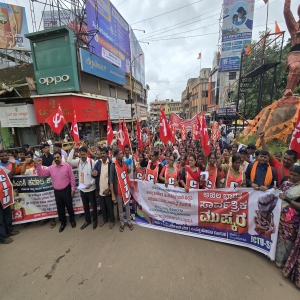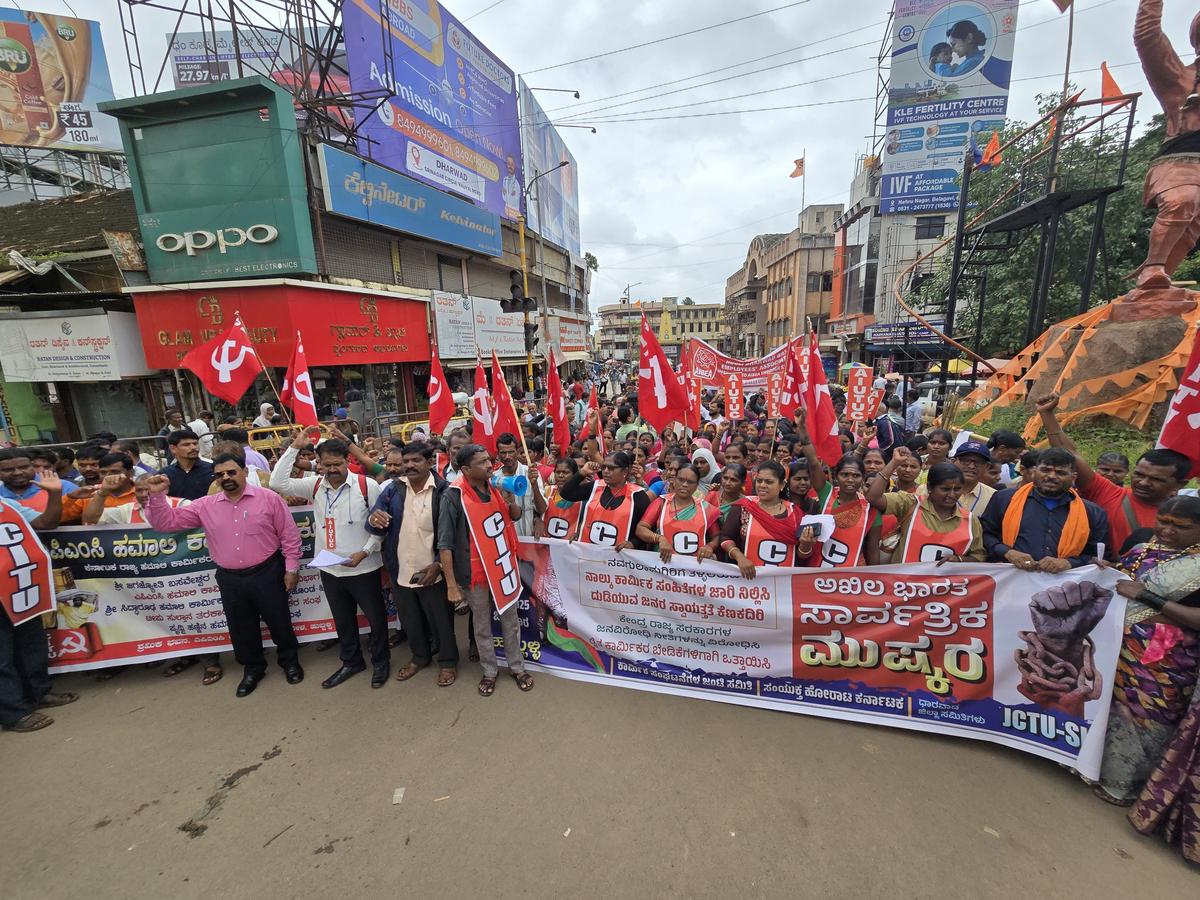
.jpg) Jose Vattakuzhy
Jose Vattakuzhy

The Joint Platform of Central Trade Unions and several Independent Sectoral Federations/Associations, except the Bharatiya Mazdoor Sangh (BMS), on "anti-labour and anti-people" policies of the central government, organised a Nationwide General Strike on July 9, 2025, following the May 20 schedule. Their primary demands included "protection of minimum wages, social security, and employment rights, opposition to the implementation of labor codes perceived as anti-worker, reinstatement of retrenched workers, especially contract workers, and immediate consultation with trade unions through the Indian Labour Conference and other forums."
And again, the Kerala ASHA (Accredited Social Health Activists) workers' strike, which lasted 150 days, ended on July 9, with demands for the minimum wage, social security, and decent working conditions at the Thiruvananthapuram Secretariat.
To mark the 11th anniversary of the NDA administration, which took place on June 14, 2025, numerous "11 Saal" ads have been aired on almost all TV networks and print media in the country. The subjects of each ad have represented the apex of the NDA government's achievements during the preceding 11 years. However, the so-called effects of development are not reflected in reality; thus, especially from the standpoint of the workers, India has recently seen a large number of workers' rights violations in a variety of industries, exposing structural problems that still affect millions of workers.
Global Rating
Organisations such as Human Rights Watch and the International Trade Union Confederation offer broad evaluations on the situation of labour and human rights across the globe. According to the International Trade Union Confederation's Global Rights Index, workers' rights have recently deteriorated in several regions, including Asia-Pacific, where the rate of violence against workers has nearly doubled, and workers in more nations have experienced crackdowns on their right to free speech and assembly. India's rating of 5 in the global index suggests that workers' rights are not adequately guaranteed.
Labour Codes
India's labour laws are always evolving, so it's critical to be informed about the latest developments and how they can impact workers. India's labour laws have changed significantly in recent years, so it's imperative that workers stay up-to-date. Intending to streamline and update labour laws, recent developments in India have combined 29 central labour laws into four main labour codes: the Occupational Safety, Health, and Working Conditions Code, 2020; the Code on Wages, 2019; the Code on Industrial Relations, 2020; and the Code on Social Security, 2020. Although Parliament has approved all four codes, the requirement for coordination and state-level regulations has delayed complete implementation. Draft regulations have been released by a few states, but countrywide implementation is still pending.
Gig Workers
In the 4.0 industrial revolution period, where the workers' rights standard benchmark is so obscured and artificial intelligence has become a tool for radical labour market transformation, this is another development. The worker algorithm was developed during the artificial era, as though the contractualisation of employment was impacted by globalisation. It describes personnel (such as drivers for ride-hailing services and warehouse workers) whose schedules, tasks, and evaluations are managed by artificial intelligence (AI) systems.
According to the 'India's Booming Gig and Platform Economy' of the NITI research report, the proportion of gig workers in the overall workforce climbed from 0.54 per cent in 2011–12 to 1.33 per cent in 2019–20. In addition, it is projected that there would be 23.5 million gig workers in India by 2029–30, a roughly 200 per cent increase from the 7.7 million there are now in 2023. The report also cited India's online food delivery sector's revenue as expected to increase at an annual growth rate of 19.9 per cent between 2023 and 2027. The industry's largest segment, grocery delivery, had projected revenue growth of 36.1 per cent in 2024 alone.
Digital Formalisation
The drive to digitise or collect data in a way that pushes many informal workers into the so-called formal mode is the other side of algorism. As a result, authorities asserted that India had increased worker social security entitlement from 24% at the most recent ILO convention to 64%. The main mechanism that made it feasible was the registration of e-Shram cards for informal workers. Nonetheless, 94% of e-Shram holders earn less than ?10,000 per month, according to data from 2024 alone.
Need for an EXIT Agency
One of the anti-labour tendencies that currently seems to be gaining traction is proposals from some corporate leaders to increase the maximum working hours to 70 per week. The corporate sector also faced scrutiny over its employees. In the recent past in Pune, the death of a 26-year-old young woman employee raised concerns about workplace stress and mental health. Her mother reported that she experienced extreme stress and anxiety due to her workload, leading to her untimely death.
The incident triggered national discussions about the value of employees and the existence of "EXIT" agencies, such as those in Japan, which support employees who find it difficult to leave their jobs because of workplace culture or personal anxieties. These agencies handle the resignation process on behalf of employees, communicating their decision to the employer and handling any associated requirements.
Climate Change Impact
Climate change not only exacerbates environmental vulnerabilities but also leads to serious labour rights violations, especially in developing nations like India. As the country grapples with increasing climate shocks (heat waves, floods, droughts, etc.), workers—particularly in informal and vulnerable sectors—are disproportionately impacted. The sectors most affected are agriculture, construction, brick kilns, mining and quarrying, and renewable energy. Unpredictable monsoons and rising temperatures lead to job insecurity, wage losses, and unsafe working conditions.
Workers face extreme heat exposure without protective gear, paid leave, or medical facilities. Environmental degradation and displacement often occur without consultation or fair compensation. Ironically, labour rights are often neglected in solar and wind project sites, with contract workers underpaid and overworked.
Conclusion
The current state of workers' rights in India reflects a troubling disconnect between the narrative of economic growth and the lived experiences of millions of workers. From the massive general strikes and long-standing protests like that of the ASHA workers, to the rising precariousness of gig work and the under-acknowledged labour implications of climate change, the landscape is marked by systemic neglect and growing disenfranchisement.
While legislative reforms like the labour codes were introduced with the promise of streamlining protections, their incomplete implementation and lack of meaningful consultation with workers' representatives raise serious concerns. Without urgent corrective measures and a genuine commitment to social justice, workers will remain at the receiving end of both economic and ecological disruptions.